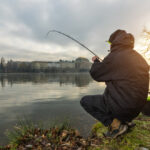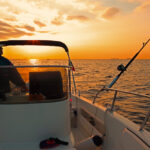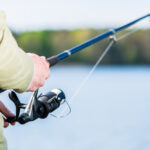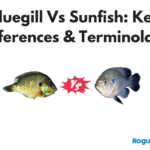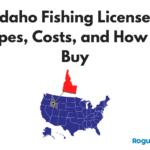Cruising around lakes, rivers, and oceans on your boat is beautiful, fun, and relaxing. But what happens when it’s time to pass a fishing vessel? Chartered fishing boats can have large nets, ropes, and fishing lines under the water, which could cause accidents and hinder the occupants from doing their job.
Further, it’s always polite, and a general rule of most captains not to disrupt recreational anglers if at all possible. In addition, the US Coast Guard’s specific rules, federal laws, and protocols regulate the safe passing of fishing boats to ensure safe navigation.
We asked expert captains, anglers, and commercial fishermen to help us answer some of the most common questions we often hear:
- How should you pass a fishing boat the right way?
- What are the navigation rules?
- What speed limit should recreational boats use?
- As a common courtesy, what is a safe speed for oncoming boat operators?
8 Tips To Help You Pass A Fishing Boat
In this post, we’ve taken the time to share the best way to pass a fishing boat based on expert advice, whether you’re in a small boat or a large yacht while taking into account navigational rules, common sense, and politeness. Below are a few tips on how you should pass a fishing boat.
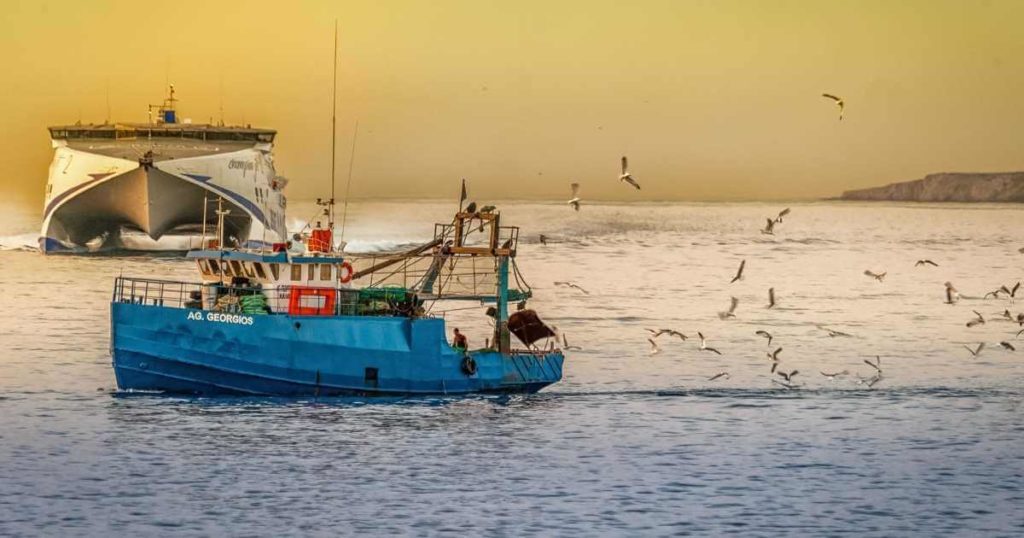
1. Consider The Type of The Fishing Boat You are Passing
Knowing the type of fishing boat, you are about to pass gives you insight into many things. It helps you determine the safest way to pass and how far you should be from the boat. For example, commercial fishing boats will have bigger and broader nets, requiring as much space as possible.
Look at the boat closely to see how big, where they have cast their nets, and whether they are cruising or stationary. All these considerations will help you decide how to pass the boat without causing any damage.
We talked to Captain Nim, a US Coast Guard-certified captain with Sail LUNA, and an experienced PADI Divemaster, to get his insights on how to pass a powered boat that’s fishing. He gave the following considerations to determine how to pass a fishing boat.
When passing a boat engaged in fishing, you might want to consider a few things. What type of fishing boat is it, and what type of fishing do they do? Is it a commercial trolling vessel? Is it a small anglers fishing boat? Are they trolling? Do they cast fishing lines to the sides? Are they cruising or stationary?
-Captain Nim Hirschhorn
2. Leave As Much Space As Possible Between Your Vessel And The Fishing Boat
Fishing boats are out on the water to source fish and they could be out there for recreational or commercial use. Approach with an appropriate speed and remember that many fishing boats have lines, nets, or ropes under the water, making it essential to follow the rules of passing a fishing boat.
A minor mistake can harm either a vessel or its equipment and you want to avoid accidents if at all possible. An important rule when passing a fishing boat is to maintain a healthy distance and try to steer your boat far away from the fishing boat. Most commercial fishing boats will be bigger and have huge nets under the water and oncoming boats may be moving at a faster speed than you expect
Always assume that the nets extend underwater a long distance when passing and therefore, leave as much space as possible between you and the fishing boat. That gives you room to pass without damaging their gear with your propellers. In addition, if the boat is moving, be prepared for a large wake, or if it’s a smaller vessel, be cognizant of the wake you create.
Here is what Captain Nim had to say about the distance between your vessel and the fishing boat.
Regardless of the type of boat and type of fishing they are engaged in, we assume they are limited in maneuverability. We will give them the right of way, and we will pass them with as much distance between us as possible to make sure we do not damage their gear or risk having their lines tangle in our propellers.
-Captain Nim Hirschhorn
Captain Nim has sailed extensively throughout the Caribbean: the Bahamas, Virgin Islands, Turks and Caicos, and several areas of the world’s other great waters – including the Mediterranean, Aegean, Adriatic, and the Andaman Sea. He has even been through the Suez Canal and across the Atlantic Ocean from Europe to the United States.
3. Lower Your Speed When Passing A Slow Cruising Fishing Boat
Some fishing boats will either be cruising at a very slow speed or not cruising, especially in places where they expect to make a killing. Therefore, any other sailor on the water should know how to handle or approach such boats.
Among the important traffic rules for maneuvering your boat, it is essential to reduce your speed, move at a consistent speed, and maintain a minimum wake when approaching a fishing boat. A vessel moving at high speeds near a slow-moving boat could destabilize the vessel and either toss someone off the boat or damage the boat.
You might also tangle the nets underneath your propellers if you do not slow down and consider the distance between you and the other boat.
Captain Nim supported that point
When passing a fishing boat that is not cruising or cruising at low speed, we will lower our speed and keep our distance to make sure we do not create a wake.”
-Captain Nim Hirschhorn
4. Wait For An All-Clear Signal
It would help if you were careful, especially when cruising on large water bodies. A minor miscommunication or miscalculation could cause a tragic accident. The captains of different vessels on the water should communicate to know what time is appropriate to cross each other or what time one vessel needs to create distance from the other.
Communication at sea is usually through honks. Another important navigation rule that many follow is to wait for a signal from the fishing boat that says you are clear to pass. That acts as a safety precaution and a courtesy to other boat riders. Once you have the go-ahead, you can pass without worrying whether the fishing gear is far enough from your boat or not.
A fishing boat owner will know how far their nets extend in the water, making it easy to see when another vessel is at a safe distance. Honking is the mode of communication that boaters understand when on the water. If you want to pass on the left side of the boat, you can honk twice to signal the captain and once when you want to pass on the right.
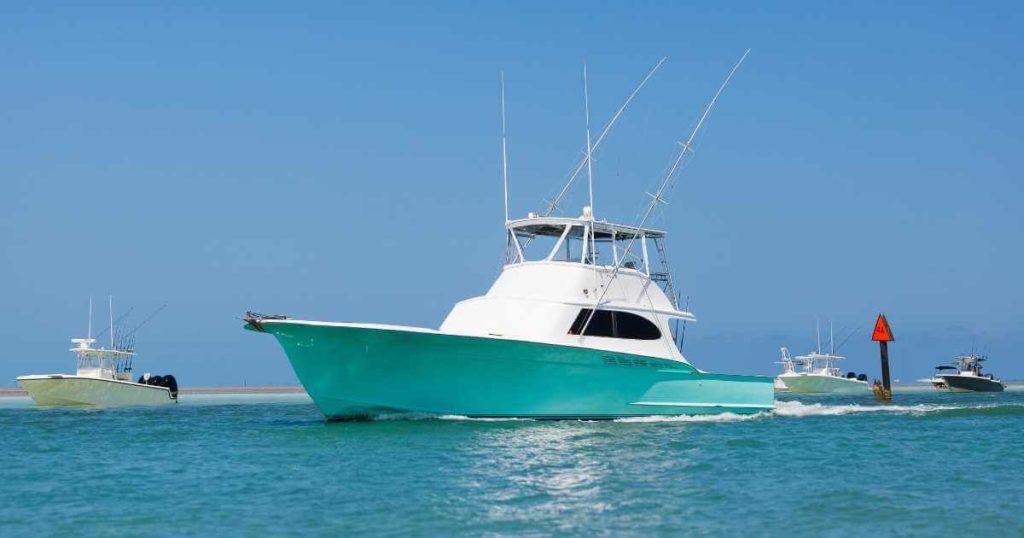
5. Pass on The Port Side
The same way you pass a car on the left is how you should pass a fishing boat. Steer your boat towards the starboard side so that both vessels are passing each other on their port side. Depending on the size boat and the circumstance, consider honking once to signal the other boat that you are passing on that side.
It is much safer to pass a fishing boat on the port side, but as we said, the circumstances could force you to do otherwise. When that is not possible, please wait for the fishing boat captain to tell you when it is clear to pass. They will honk twice and expect you to acknowledge that by echoing the honk. Just make sure that you communicate with the other captain to avoid collisions and damage.
6. Pass Behind Their Stern When Crossing Ways
It is not always that you will be going in the same direction or the opposite one. Sometimes you will be crossing a fishing boat. When that is the situation, try to pass behind the fishing boat’s stern for the same reasons. Passing in front of their boat could damage their gear, especially when you pass too close to the boat.
Leave as much distance as possible and pass the boat behind the stern. If that is not possible, you could pass in front of the boat a few hundred meters apart to ensure you leave their fishing gear intact.
Captain Nim insisted on the same with the following words.
If crossing ways, we prefer not to cross in front of their bow unless we have a safe distance. Instead, we will pass behind their stern, leaving as much space between us as possible (a few hundred feet) to ensure we do not cross their gear.
-Captain Nim Hirschhorn
You cannot be too careful on the water. Not following the rules could be tragic, making it crucial to know how to maneuver the water, especially when other vessels are involved. Fishing boats are also banking on their gear to make a living, so damaging could be tragic for them and their business.
7. Wave Politely To Acknowledge The Other Captain
Establishing a good rapport with other boaters is critical to ensuring that your vessels safely make it to the shore. As much as it is not a must to wave, it is a good gesture towards the other boaters. Creating a peaceful environment in the waters helps you form strong bonds with fellow boaters.
In case you get into an accident or need help with anything, the other boaters will be willing to help you secure your vessel and bring it to shore safely. It could also be a way to signal the other captain of your passing, and they can wave back to show that it is safe to pass.
One of the specialists we talked with, Marc Bromhall with Surfs Up Magazine, affirmed this with the following statement:
The best way to pass a fishing boat on a lake is to keep at least 15m away from it as you pass. You should also slow your boat down as you pass and politely wave, and only speed up again once you are 25m ahead of the boat.
Marc Bromhall with Surfs Up Magazine
8. Maintain Full Concentration
Sailing on the waters needs the same concentration as when driving on the road or flying a plane. When you come across another vessel on the water, you need to keep your eyes open when passing to avoid collisions or destroying their gear—the more attention, the lower the risk of accidents.
Keep an eye out for swimmers or other things that could cause a collision. Notice everything about the other boat and how far it is to determine whether it is at a safe distance for you to pass. Communicate with the captain without losing focus on your vessel to ensure a smooth passing.
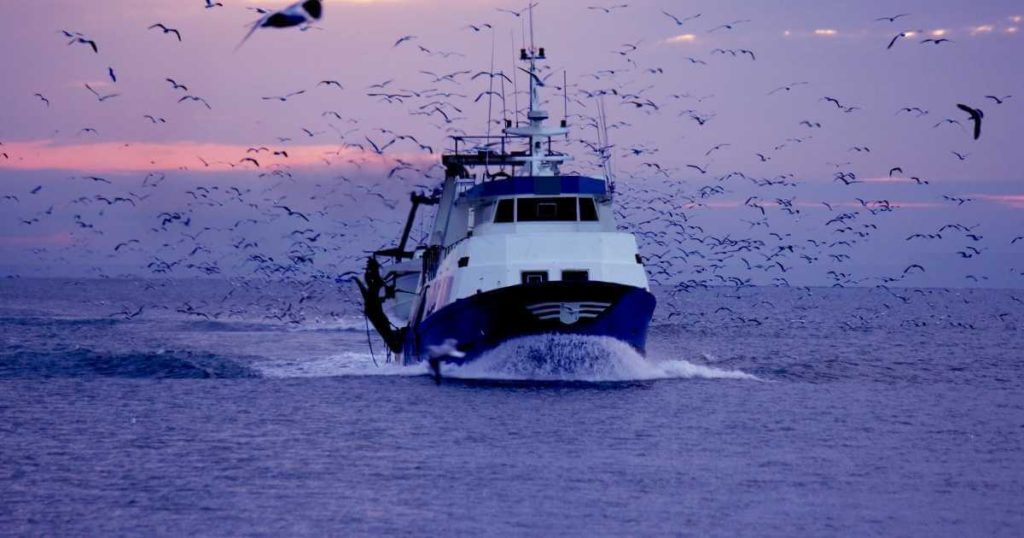
Passing a Fishing Boat Safely and Politely Summary
Passing a fishing boat is not uncommon in any water body you are sailing on and utilizing the US Coast Guard’s rules is important. You will eventually find yourself in a situation where you are approaching a fishing boat in your personal watercraft.
We hope that the tips of lowering your speed, waiting for the all-clear, and passing on the port side, helped you know how to work around such a situation in the future. We’d also like to remind you to always have the appropriate personal flotation device onboard for each passenger.
The basic rules for passing a fishing boat are lowering your speed, waiting for a clear signal, and maintaining distance between your vessel and the fishing boat. All other highlights emphasize those three points that help keep you safe from other water users. Do not forget to stay alert and have courtesy.
You may also be interested in our boating posts about booking a fishing charter and how to run a hull identification number.
